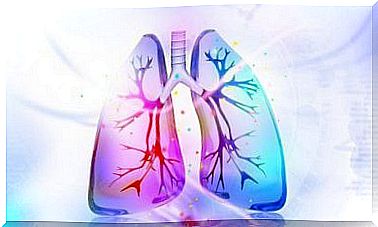The Relationship Between Asthma And Rhinitis

The relationship between asthma and rhinitis has been known in medical science for a long time. It is not uncommon for an asthmatic patient to show up with symptoms of rhinitis in the spring and vice versa.
Why do you actually have this inherent link? For some researchers, it originates in the immune system; for others, it is a similar variant of the lining of the airways that is shared between the bronchi and the nose.
What is rhinitis?
This consists of an inflammation of the lining of the nose. It may respond to various etiological agents, but the end result is always an increase in the size of the accumulation of fluids and inflammatory cells, all based on an external agent or an internal stimulus.
There are two types of rhinitis, infectious and non-infectious. In the first case, microorganisms invade the nose and infect it; it can either be caused by a virus or bacteria. The body responds to colonization and activates mechanisms to expel the invasive agent. This is what determines the inflammation.
The most common type of non-infectious rhinitis is an allergic variant. It seems to appear to a greater extent among asthmatic patients. The external substance, neither a virus nor bacteria, is a particle the immune system views as foreign so it faces it. Pollen is usually one of the causes during certain seasons.

What is asthma?
Bronchial asthma is an inflammation of the bronchial mucosa with hyperactivity in the bronchi. This means that the airways close suddenly and impede normal airflow beyond the inflammatory process.
This condition is on the list of obstructive and chronic respiratory diseases. It develops in the form of acute episodes in the long term. Certain triggers for crises, such as colds or infections, are more common in winter. This is the time of year when people are most bothered by it.
Doctors usually diagnose the pathology at an early stage. These children experience either bronchospasm when they are physically active or when the temperature drops. The doctor first treats them with bronchodilators to evaluate their development. Furthermore, if the crisis repeats itself, they will diagnose the patient with asthma.
The severity is not always the same and the development is not linear. Some people thus suffer from mild variants and may experience only one asthma attack a year, while others experience an almost persistent state of shortness of breath.
Causes of the relationship between rhinitis and asthma
There are many different explanations for why patients with asthma often suffer from rhinitis. Estimates indicate that up to 75% of them go through a period of inflammation of the nasal mucosa. On the other hand, people have been diagnosed with rhinitis bronchospasm in 40% of cases. Let’s take a look at some theories about this connection.
Air conditioning
One of the explanations for why people with rhinitis also suffer from asthma is the lack of adequate airflow through the nose. There is an inflammation of the nasal mucosa, so these people prefer to breathe through their mouths. This is because it prevents humidification and heating of the air.
Thus, when cold air reaches the bronchi, the airways tend to contract because this flow is identified as dangerous. Several scientific studies have revealed that bronchoconstriction increases when it is cold, for example in winter or when playing sports in the snow.
Communication between the mucous membranes
Research in both directions shows a relationship between all parts of the respiratory mucosa. It is likely that the cells in the bronchi will react in some way if a person gets allergens in the nose. On the other hand, the nasal mucosa overcompensates when the lower airways contract.
Part of the pathophysiological mechanism is in nerve communication and in the reactivity of blood vessels. This seems to be the case with exercise-induced asthma, mediated by the release of adrenaline and norepinephrine released by stimuli during exercise.
These neurotransmitters link rhinitis and asthma by producing a closure of the blood vessel caliber. This closure reduces circulation and the ability to respond to external agents throughout the airway mucosa.

The immune system and the relationship between asthma and rhinitis
Eosinophilic granulocytes are a special type of white blood cell. They play a special role in the transmission of allergic reactions throughout the body. In fact, researchers are aware of their role in both rhinitis and asthma.
We assume that they are similar mechanisms, so it makes sense to assume that allergic reactions share the same pathways as these cells and that their increase in situations against external agents is crucial.
Furthermore, the inflammatory substances are not static, but take advantage of the blood circulation to move. They can therefore travel from the nose to the bronchi.
Rhinitis and asthma: similar but different
Finally, we can explain the relationship between rhinitis and asthma through different hypotheses, but that does not mean that they are the same condition. The medications used to treat the conditions are similar, but the approach is not the same.
It is important that the doctor is able to distinguish between the two conditions so that they can prescribe proper treatment. Either way, asthmatic patients should learn to deal with rhinitis crises since they have a high probability of suffering from it.









